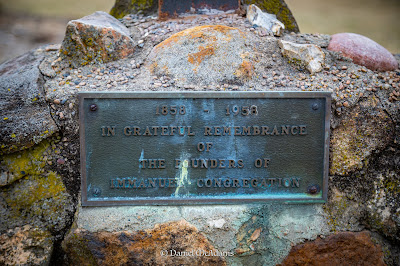When it comes to awesome names for a church, Bacon Chapel currently takes the top spot.
Bacon Chapel is a Methodist church that was organized in the fall of 1837. There was no church building or structure at the time but the group met in the Lewis cabin about a mile north of the present building. The original members of Bacon Chapel were: John B. and Charlotte Lewis, Charles Hunt Christian and wife Dolly Ann Wiley Christine, Mary I. Wailes, Margaret A. Moore, M. Wheeler, David Wood, William Wood and Stanford Drain. Rev. James Pryor of Ohio, held protracted services at the Lewis Cabin, and was the first Methodist minister in Shelby Co, MO. Worship then moved to a large log cabin built for George Bacon of Hannibal, Missouri, but was never occupied as a dwelling. It was deeded to the chapel by Mr. Bacon, hence the name. In 1845 the first church was constructed on land donated by Mr. Bacon. It was a log structure covered with clapboards and cost $1,900. Father Eads "Old Father Eads" held the first service before a clapboard floor was put in place. This initial service was after the Pilgram's style of 'deep humility and fervent sprit. The congregation at that time consisted of 217 members with a John W. Wailes as superintendent of the Sunday School.
The first church building stood for twenty years. In 1870, the current building was constructed.
Bacon Chapel is the oldest church in Shelby County and is known as the "Mother of Methodism" in Shelby. In 1938, the chapel was still active. A remarkable fact about Bacon Chapel in 1938 is that many of the members that were currently attending were descendants of the pioneer settlers who organized the congregation.
Some of the ministers who have served this congregation are: Revs. William Pryor, Conley Smith, T. Ashby, Tyson Dines, Martin L. Eads, James M. Green, P.M. Pinkard, Jocob Sigler, James Wainright, James B. Callaway, George Smith, J.B. Baker, M.Birch, L. Newmann, James Light, E.K. Miller, William M. Bush, James Monroe, Jospeh Dines, E. Hudson, T. DeMoss, L. Bush, W.M. McMurry and B.A. Spencer.
As of 2005, services had been held twice a month at the building. I am not sure if it is still in use or what the current situation is with Bacon Chapel.
There is a large graveyard behind the chapel.
Sources and further reading:
http://www.iowaz.info/moshelby/baconchapel.htm
Elliott, Katherine. "Place Names of Six Northeast Counties of Missouri." M.A. thesis., University of Missouri-Columbia, 1938.












































